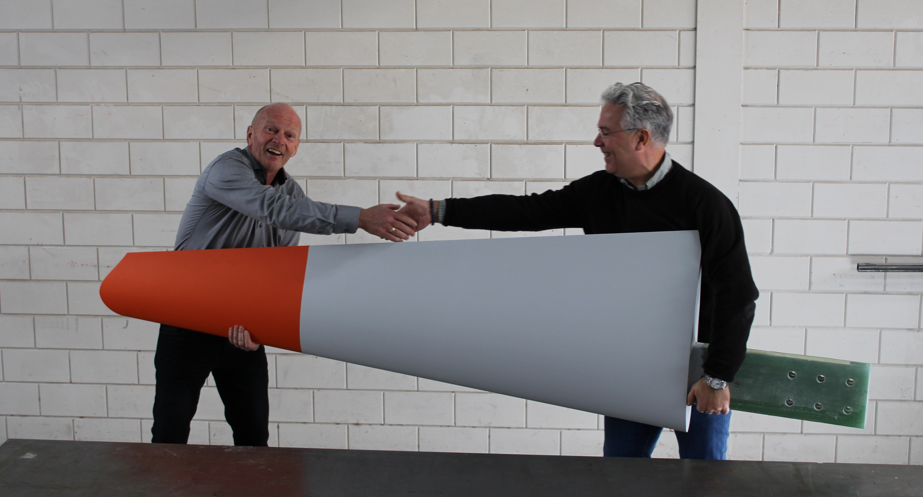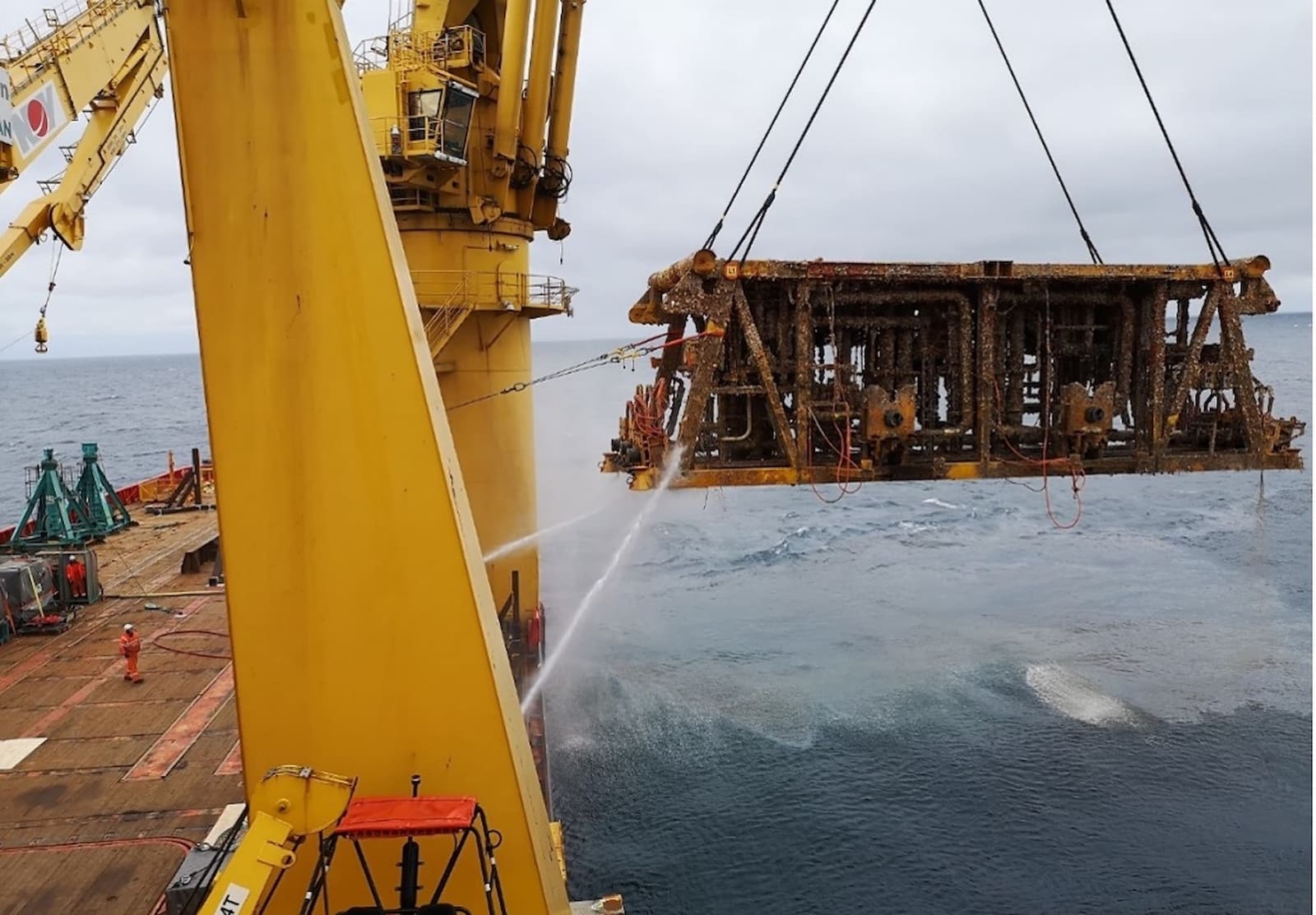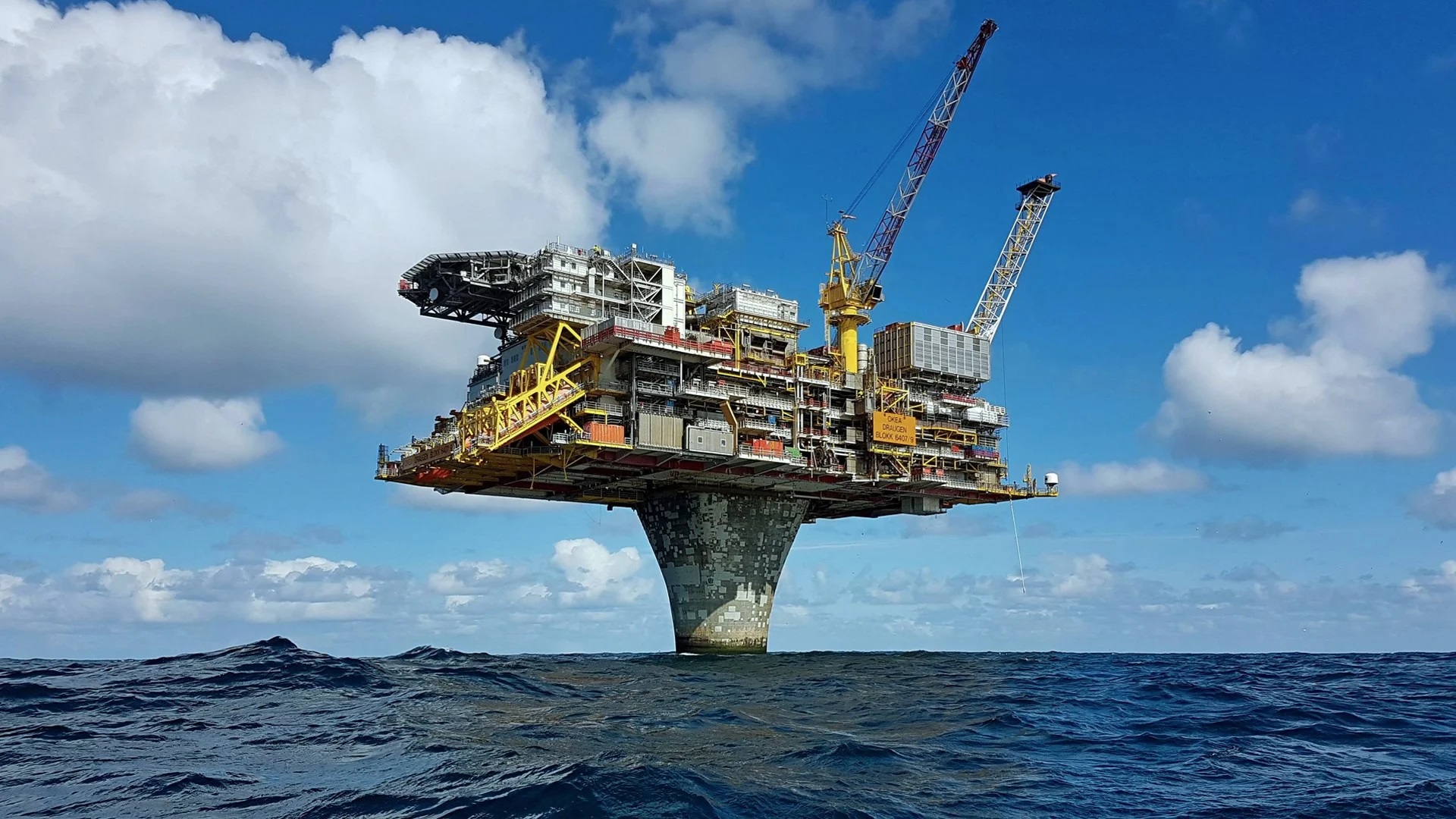Innovative tiltable, liftable one-piece rotor design aims to withstand storm-force winds, boost energy yield, and enable more compact offshore wind farms; presented at WindEurope; Key partners: We4Ce, TouchWind, Mitsui O.S.K. Lines (MOL) and Kleizen, who produced the blades.

Almelo, Netherlands, 7 April 2025 — We4Ce, a Dutch rotor blade designer, has designed 10 rotor blade sets for Dutch wind turbine startup TouchWind for testing on its floating TW6 turbine—a self-tilting, one-piece rotor design that breaks from conventional three-blade models. Engineered to withstand wind speeds of up to 250 km/h—the highest wind class in wind industry standards—the future commercial version is expected to cost significantly less than traditional turbines while delivering higher energy yields.
Responsible for the blade design, We4Ce partnered with Dutch mould specialist Kleizen to produce both the moulds and blades. TouchWind, backed by its main shareholder, Japan-based Mitsui O.S.K. Lines (MOL), contracted We4Ce as lead partner for the blades.
The delivery of the blades marks the next prototype phase of TouchWind’s innovative tilting, one-piece rotor wind turbine. Featuring a six-meter-diameter rotor designed for efficient energy capture, the 12 kW turbines will be tested onshore and offshore. The turbines will be placed close to one another to validate the high energy density previously demonstrated in wind tunnel tests. Currently being assembled in Eindhoven, the wind turbine will start testing in the summer.
“We4Ce made a special structural design for the smaller blade compared to the default blades we see nowadays. For the aerodynamic design, the inventor, Rikus van de Klippe of TouchWind, made a novel downwind self-tilting design. The rotor tilts upward, nearly parallel to the water surface at high wind speeds,” says Arnold Timmer, managing director of We4Ce.
The turbine functions similarly to a kite: instead of pushing against the wind like traditional turbines, it “lifts itself” with the wind, using aerodynamic lift to stay stable and to regulate the power. This configuration allows the blade to harness strong winds more efficiently while reducing stress on the structure.
TouchWind’s design not only aims to reduce wind interference between wind turbines, a common issue in large wind farms, but also to improve overall wind farm power generation efficiency.
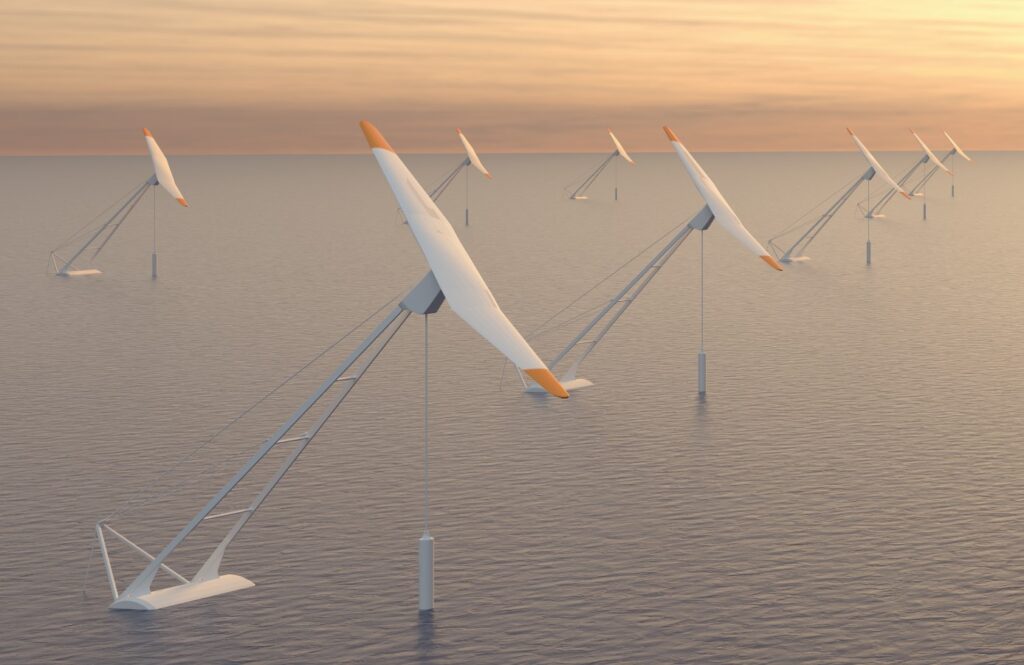
Lifting rotor reduces weight and allows high wind speeds
The unique design with lifting rotor reduces the overall weight of both the wind turbine and its floating platform, contributing to simpler and more cost-effective deployment.
Conventional three-blade turbines shut down above 90 km/h to prevent load damage, a particular concern to the blade. With its self-adjusting single rotor, TouchWind’s design minimizes load stress and remains operational in wind speeds up to 250 km/h.
We4Ce has developed a new production method using one-shot infusion technology for the central part of the rotor blade. By designing the aerodynamic shells to eliminate bonding lines in the nose area, the risk of leading edge erosion is significantly reduced—resulting in improved durability and higher annual energy yields.
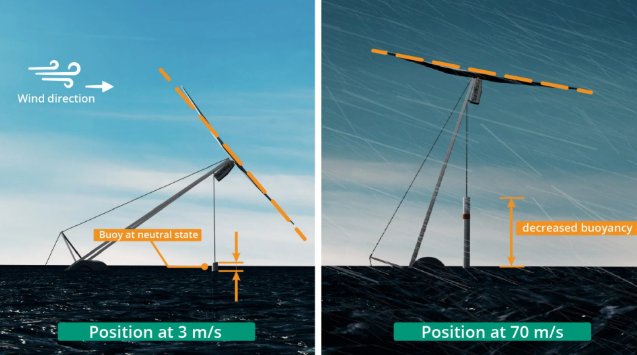
Kleizen produced the rotor blades
Kleizen designed the complex mould that accommodated the unique blade geometry, tight tolerances and stringent performance requirements.
“We were subsequently contracted to manufacture the entire rotor blades and we worked closely with We4Ce to apply the vacuum infusion approach for the production,” says Jeroen Maas, Managing Partner, Kleizen.
Kleizen used a two-component epoxy resin system, optimised for the Resin Infusion Moulding (RIM) process, which was combined with glass fibre reinforcements to ensure strength, durability, and dimensional precision. The resin system underwent a carefully controlled post-cure process to achieve the mechanical properties.
“We4Ce integrated engineering, processing, and training expertise to enter this new wind turbine field. By combining our knowledge and skills, we successfully executed the order for TouchWind,” concludes Timmer.

Looking ahead, TouchWind has begun development of a 3–5 MW version of the turbine in 2025, aiming to scale its design for future offshore deployment. The wind turbines are suitable for more compact offshore wind farms and could be scaled further in the future.
On stand C1-C70, TouchWind will present its wind turbine design at WindEurope, Copenhagen, 8-10 April 2025.
